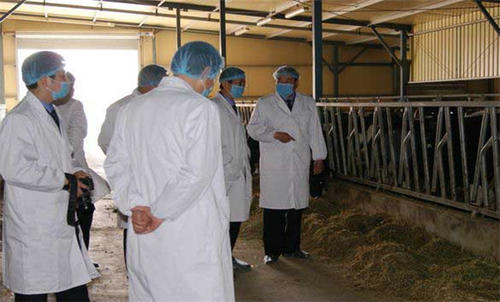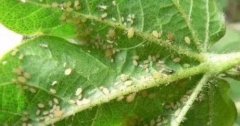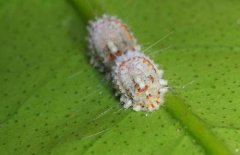The latest news of bird flu in 2018: the number of bird flu cases has dropped by nearly 50%, and epidemic prevention work will be strengthened.
Now we have reached a period of high incidence of bird flu, so we need to strengthen our defense in this respect. What should we do specifically? Let's take a look.

Ducks need to be screened before slaughter, and epidemic prevention is effective.
In order to prevent the spread of bird flu, the Council of Agriculture began last year to force all ducks in Taiwan to comprehensively screen the virus before listing. Huang Jincheng, vice chairman of the Council of Agriculture, said that this method worked. Since another poultry farm was confirmed to be infected with H5N6 on March 7, 2017, no poultry farm has had the same outbreak in more than a year, confirming that H5N6 no longer exists in Taiwan's environment. It was also confirmed that there were no more outbreaks of H5N3 and H5N8 in poultry farms.
Huang Jincheng, vice chairman of the Council of Agriculture, admitted that the remaining H5N2 is the most difficult to remove of all bird flu viruses. (photography / Guo Yizhen)
Big data's monitoring and control combined with epidemic prevention
In addition, in November last year, the Council of Agriculture set up the "Avian Influenza Prevention and Control Research Center". According to the data of poultry farm density and waterfowl density for the first time, it was analyzed that the high risk areas of bird flu outbreaks in Taiwan were concentrated in Yunlin and Pingtung. Yunlin reached its peak in Dongshi Township, Sihu Township, Mailiao Township, Taixi Township and Bao Zhongxiang Township. Huang Jincheng said that these predictions were later confirmed to be completely consistent with the location of the outbreak site. The results are of great reference value.
The Council of Agriculture also strengthens epidemic prevention work according to these high-risk areas. In addition to mandatory virus testing before duck slaughtering, 60 local chicken farms are inspected every month in high-risk areas. At the same time, with reference to the analysis of the research center, the high-risk migratory birds that have detected avian influenza virus in recent years inhabit wetlands, including Ilan tide wetland, Chiayi Aogu wetland, Kaohsiung eggplant wetland, Tainan salt field and Sicao wetland. All poultry farms within a radius of 5 km are included and monitoring should be strengthened.
H5N2 is difficult to remove, it is expected to start with the egg breeding farm.
Jincheng admitted that the remaining H5N2 is the most difficult to remove of all bird flu viruses. The virus has long existed in duck farms, laying hens and egg breeding farms, of which an average of 50 to 60 per cent of egg farms in Taiwan are antibody positive. It shows that half of the laying hens in Taiwan have been infected with H5N2.
Huang Jincheng said that most laying hens in Taiwan are raised in a mixture of the old, middle and young generations, and the H5N2 virus shows a state of circulation in these environments, so it is very difficult to require virus screening in every game and cull if the virus is detected, so this piece is very difficult to deal with. At present, it is more likely to be an egg breeder farm. Although it is also a mixed culture of the old, middle and young generations, the antibody positive rate is only 20% to 30%. In the future, the Council of Agriculture can start with egg breeders. It is required to screen the virus in every game and clean the virus step by step.
- Prev

Cotton aphid characteristics of flower aphids, symptom characteristics of flower aphids and cotton aphid morphology
Among the common insect pests of flowers, the harm of cotton aphid is very great. Let's take a look at the harmful habits and forms of cotton aphid. Harmful habits: cotton aphids are common aphids in general herbaceous flowers, occurring in plant buds, young leaves, or flower buds, Corolla
- Next

Powdery beetle: characteristics and harmful diseases of powdery beetle
There are many kinds of scale beetles. Do you know powder scale insects? What is its harmful habit? What is the shape? Let's take a look. Harmful habits: it can happen on Christmas red all the year round, especially in poorly ventilated facilities.
Related
- A one-day flower show brings 130 million yuan in orders! Nanhai, this Phalaenopsis exhibition is amazing
- What do the flower language and meaning of Lutheran tree mean? Precautions for planting Lutheran tree
- Encounter Chaoshan Kongfu tea, not without this cup of Phoenix single clump
- The durian market in Vietnam and Thailand is flooded. The price of imported durian has plummeted by 30-40% in a month.
- Shanghai solved the problem of local vegetable supply by planting 80,000 mu of green leafy vegetables.
- Wageningen University has become the best agricultural university in the world for the seventh time in a row.
- The strongest export season of South African grapes is full of challenges, with exports to Russia falling sharply by 21%.
- Sri Lanka is on the verge of bankruptcy, "Tea for debt" Organic Agriculture Revolution aggravates the Food crisis?
- Turning waste into earthworm manure and worm manure into organic fertilizer-A new choice for auxiliary farming
- Organic rice growers shoulder the responsibility of nurturing agricultural talents! Yinchuan Sustainable Farm with Organic Life Camp

